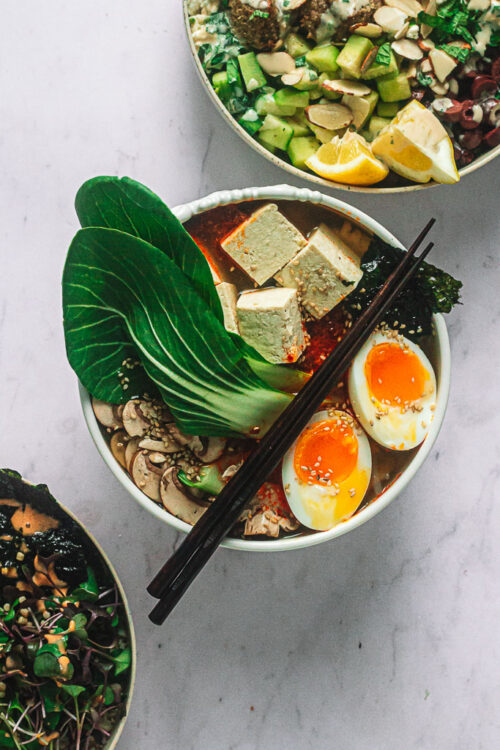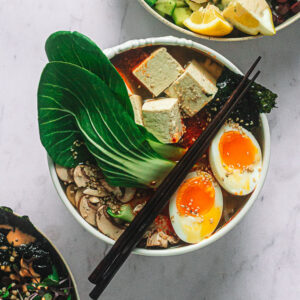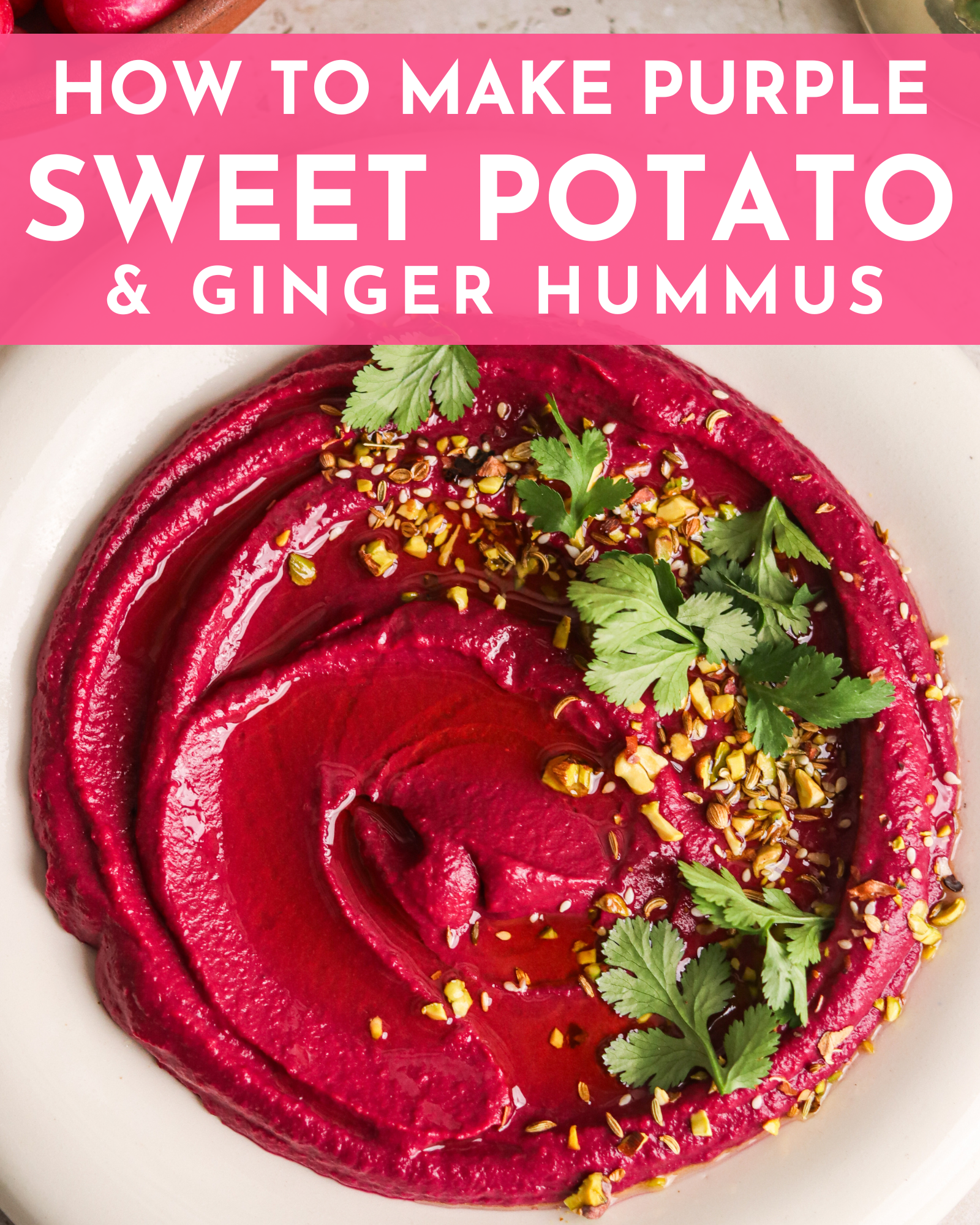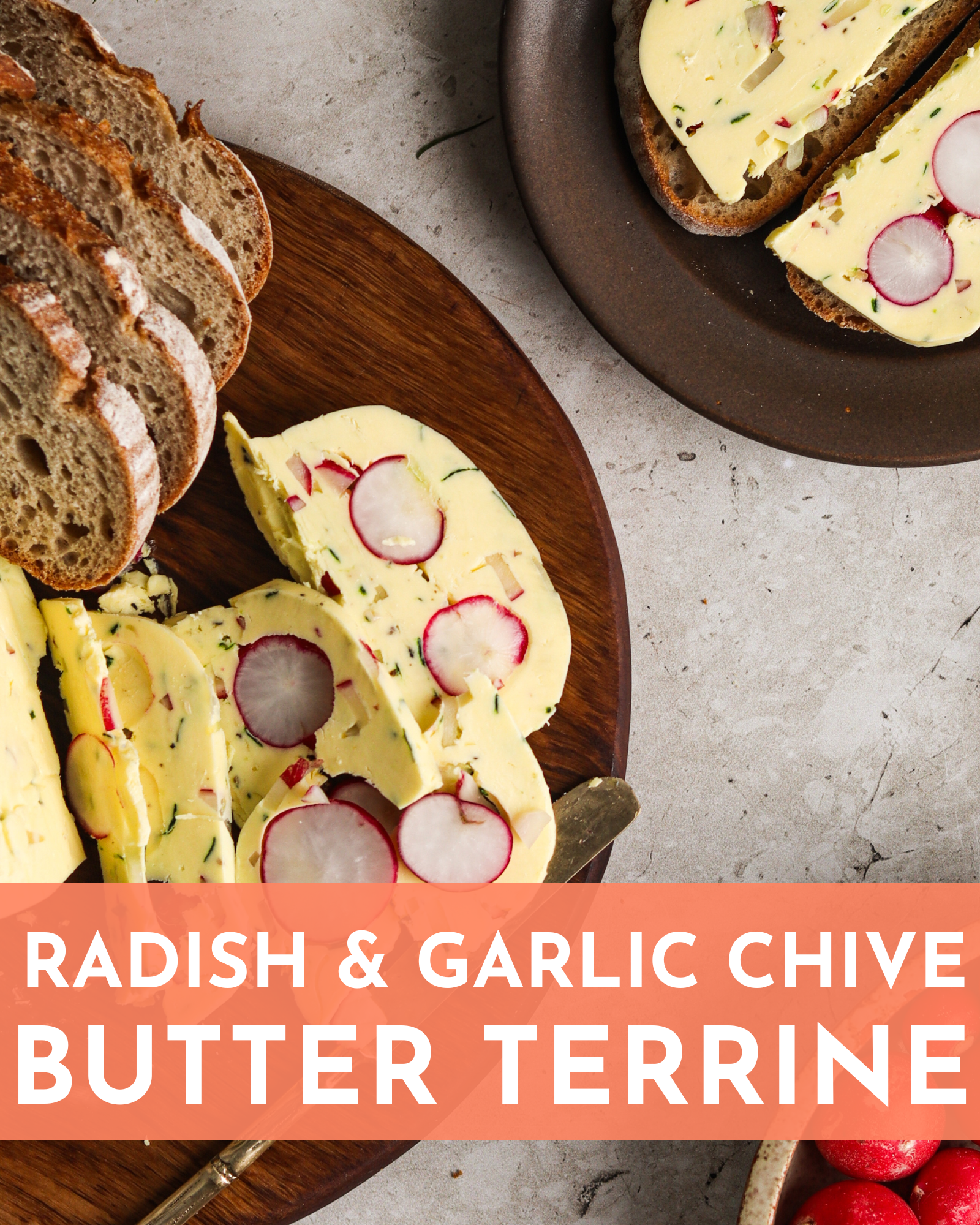Here’s a dish that promises both warmth and a delightful crunch, one that beckons the soul and the senses. Introducing our 30 Minute Tofu and Veggie Ramen – an ode to authentic Asian flavors with a modern, quick-fix twist. Whether you’re nursing a cold, craving some comfort, or just keen on introducing a culinary adventure to your weeknight, this ramen is your ticket. With tofu cubes that soak up all the flavors, contrasting the earthy shiitake and the crisp bok choy, every spoonful promises a symphony. Get ready to dive into umami-packed goodness!

Why This Ramen Rules:
- Swift Satisfaction: This isn’t your ordinary hours-long ramen preparation. With this recipe, you’re getting that deep, rich flavor in just 30 minutes! It’s a game changer for those sudden ramen cravings or busy weeknight dinners.
- Nutrition Meets Noodles: With bok choy, shiitake mushrooms, tofu, and more, you’re not just sipping on flavorful broth, but also infusing your meal with a wealth of nutrients. It’s a well-rounded bowl where health and taste go hand in hand.
- Versatility is Key: Whether you’re a staunch vegetarian or a chicken-broth believer, this recipe easily caters to both. The choice between chicken or vegetable broth lets you customize according to your dietary preferences without compromising on taste. Plus, the kick of chili oil? That’s all up to your spice threshold! Adjust and enjoy.
The Ramen Rundown: A Dive into its Flavorful Past
Ramen is so much more than just a bowl of noodles; it’s a cultural icon with a rich and intriguing history.
- Chinese Origins: Contrary to popular belief, ramen actually originated in China. Chinese immigrants introduced these wheat noodles to Japan in the late 19th century or early 20th century. The term “ramen” is Japanese, derived from the Chinese word “lamian,” which means “hand-pulled noodles.”
- Post-War Popularity: Ramen’s real rise to fame in Japan began after World War II. The food shortages of post-war Japan made cheap and high-caloric foods indispensable. Ramen stalls and street vendors became a staple, offering quick, delicious, and affordable meals. The introduction of instant ramen by Momofuku Ando in 1958 further solidified ramen’s place in Japanese food culture and later around the globe.
- Regional Varieties: While many outside of Japan are familiar with just a few types of ramen, there are actually numerous regional variations across the country. From the miso-based broth of Sapporo in the cold north to the pork-rich tonkotsu broth of Hakata in the south, each region boasts its unique spin on this beloved dish. This adaptability and diversity of ramen are what have helped it maintain its enduring appeal, with chefs around the world now adding their innovative touches to this classic bowl.
Reverse Meal Plan with Tofu and Veggie Ramen
At its core, Reverse Meal Planning isn’t about creating a week’s menu from scratch. Instead, it’s the art of looking at what you already have in your kitchen and crafting meals around those ingredients. It’s economical, reduces waste, and often sparks culinary creativity!
Applying Reverse Meal Plan to our Tofu and Veggie Ramen:
- Start with Staples: Got some leftover tofu or a random assortment of veggies? Ramen is an incredible catch-all dish. It’s the perfect canvas to showcase different textures and flavors. Toss in those extra veggies or proteins, and let the rich broth bring it all together.
- Broth Basics: Whether you have chicken, beef, or vegetable broth (or even bouillon cubes), any of them can serve as the base for your ramen. You can even elevate basic store-bought broths with ingredients you likely have on hand – think soy sauce, garlic, ginger, or even a dash of fish sauce.
- Noodle Necessities: While Shirataki noodles are a fantastic choice for our recipe, ramen is versatile. Leftover spaghetti, udon, or even rice noodles can slide right into that savory broth. The key is to ensure whatever noodle you use is cooked appropriately before diving into the ramen pot.
This Tofu and Veggie Ramen recipe provides a flavorful and adaptable foundation. So, next time you’re staring into the depths of your pantry or fridge, remember: with a little imagination and a dash of creativity, a mouthwatering bowl of ramen is just moments away. Don’t plan forward; plan from what you have!
Ramen Revelations: Your Top Questions Answered
- Can I use a different type of protein besides tofu? Absolutely! This ramen is versatile. You can easily substitute tofu with chicken, beef, or even shrimp. Just ensure you adjust the cooking time accordingly to fully cook your chosen protein.
- I’ve never heard of Shirataki noodles. Can I use another type of noodle? Of course! While Shirataki noodles are known for being low-carb and gluten-free, you can replace them with other noodles like udon, soba, spaghetti, or even egg noodles. Just follow the package instructions to cook them right.
- Is the chili oil necessary? Chili oil adds a delightful kick to the ramen, but it’s optional. If you’re not a fan of heat or are serving this dish to kids, you can skip it or serve it on the side for those who enjoy a little spice.
- How long does this ramen keep in the fridge? You can store the prepared ramen (sans toppings) in an airtight container in the fridge for up to 3 days. However, for the best experience, add the toppings (like sesame seeds, chili oil, and egg) just before serving.
- Can I make the broth ahead of time? Yes, you can! The broth can be prepared up to 2 days in advance. Store it in the refrigerator and simply reheat it when you’re ready to assemble your ramen bowls. This method often allows the flavors to meld, resulting in an even richer taste.
Other Asian Cuisine Favorite Recipes:
- Miso Ramen Recipe
- Easy Beef Ramen Noodle Bowl
- Korean Zucchini Noodles
- Vietnamese Pho Recipe: Beef Noodle Soup
- Grilled Tofu Salad with Miso Dressing

30 Minute Tofu and Veggie Ramen with Sesame seeds and Chili Oil Recipe
Ingredients
30 Minute Tofu and Veggie Ramen
- 4-6 eggs
- 1 tbsp sesame oil
- 5 cloves garlic grated
- 1 inch ginger grated
- 6 cups chicken or vegetable broth
- 2 cups water
- 4 oz. shiitake mushrooms
- 1 tbsp low sodium soy sauce
- Sriracha to taste
- 2 cups bok choy chopped
- ½ cup scallions chopped
- 1 package extra firm tofu chopped into big dice
- 2 packages Shirataki noodles rinsed thoroughly
To Serve:
- Sesame seeds
- Chili oil
Instructions
- Make your eggs. Fill a medium sized pot with enough water to cover an extra inch of the eggs and place of high heat. Once boiling, gently lower your eggs into the pot. Set your timer for 6-7 minutes, depending on your soft boiled egg preference. While cooking, make an ice bath for your eggs. Once the time is up, carefully remove eggs and place into an ice bath. Gently crack the eggs and slice in half.
- Make your ramen. Heat sesame oil in a large pot over medium low heat. Add the garlic and ginger and fry for 2 minutes until soft and fragrant. Add the broth and the water and bring to a simmer. Once simmering, add mushrooms, soy sauce, and sriracha, and continue to simmer for 10 minutes. Add the bok choy, scallions, tofu, and rinsed Shirataki noodles, and simmer for an additional 5 minutes until the bok choy softens and tofu is warmed through. Remove from the heat and taste and adjust for soy sauce, sriracha, sesame oil, or salt.
- Fill bowls and top with sesame seeds, chili oil, and egg.





0 Comments